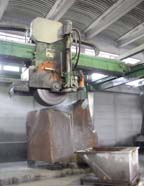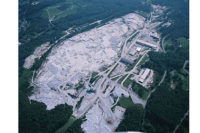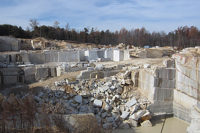
In the shadow of mighty Mount Etna, workers harvest and process the wealth of lava stone that flowed throughout the Catania region after its 1669 eruption. The mountain itself looms in the background wherever one stands within the region, and the hillsides are dotted with hardened lava rock.
This stone has been in production for years, and much of the curbing and paving in the major city of Catania are made from lava rock. Among the producers of this stone is Centro Lavorazione Pietra Lavica (CLPL) di Rapisarda Carmelo & C. s.n.c., which is located in Piano Tavola, Catania.
The stone has maintained the same light gray tone over the years, although the extraction methods have improved dramatically in recent time. As of 1999, explosives are no longer part of the extraction process at Rapisarda Carmelo. Instead, modern extraction machinery is used to free the stone from the earth in the form of massive boulders.
After the stone is extracted, it is processed by a combination of traditional methods, including hand tooling, as well as by state-of-the-art machinery. Just outside of the quarry, long-time stoneworkers split and tool the lava stone by hand, giving a time-honored look to the finished products.
Large blocks are processed as needed on wire saws and disc saws, and for mass-produced tiles, the shaped blocks are processed on Pedrini blockcutters. After the blockcutters cut the blocks into strips, tile saws are used to create finished tiles. And although the company uses modern machinery, it also relies on the experience and skill of the plant workers, since the tile-cutting process requires a significant amount of labor and supervision (similar to the production of slate tiles). Overall, the company has a total of 30 workers.
In addition to the equipment for tile production, Rapisarda Carmelo also has several bridge saws for cut-to-size work. Also, the company recently added equipment for automatically bush-hammering the surface of the stone.
Although the majority of Rapisarda Carmelo's production is tile, it also fabricates some customized architectural work, including wall cladding and other elements. Its products have been used for architectural projects in Florence, Amalfi and Catania as well as in foreign markets such as Singapore, Spain, Germany, Belgium and the U.S.




